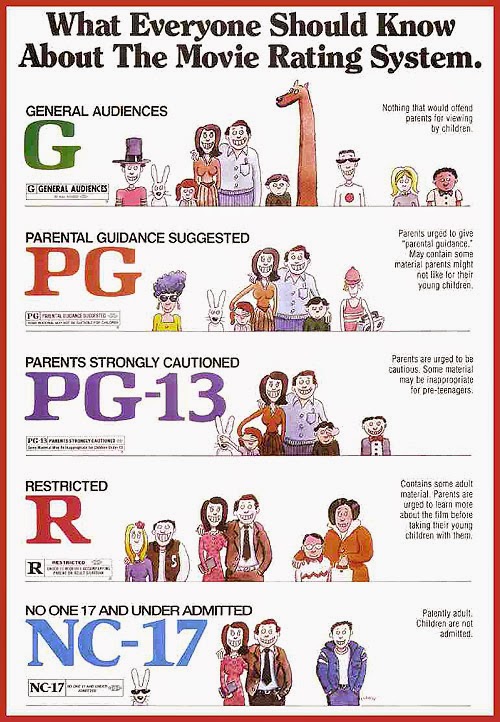

Movie Ratings Movie ratings movies mean rated rating film do tv does films pg mpaa motion picture shows parental choose board article
When it comes to the world of cinema, film ratings play a crucial role in shaping our viewing experiences. They guide us in choosing what to watch, ensure that we make informed decisions, and help us understand the content of the films. Let’s delve deeper into the realm of movie ratings, exploring their origins, significance, and how they influence the film industry and audiences alike.
How Are Films Rated Anyway?

Films are rated based on a variety of criteria including language, violence, sexual content, and thematic elements. Different countries have their own systems for rating films, often influenced by cultural norms and societal standards. For instance, in the United States, the Motion Picture Association (MPA) assigns ratings like G (General Audience), PG (Parental Guidance), PG-13 (Parents Strongly Cautioned), R (Restricted), and NC-17 (No One 17 and Under Admitted). Each of these ratings gives viewers an idea of what to expect before they engage with the film.
What Are Movie Ratings? Origins & History

The concept of movie ratings isn’t new. It dates back to the early 1900s, when various societies began to recognize the need for regulating the content of films to protect young audiences. Over the years, these regulatory bodies evolved, leading to the establishment of standardized rating systems that were designed to be fair and informative.
In the early days of cinema, films were often subjected to censorship rather than a rating system. However, as the film industry grew and the audience became more diverse, it became clear that a standardized rating system was necessary. The aim was not only to protect vulnerable viewers, particularly children, but also to respect the creative freedom of filmmakers.
Today, it’s imperative for filmmakers to understand these ratings. It helps them to identify their target audience effectively. For example, a movie rated PG-13 might aim to attract a younger demographic while ensuring that the content is appropriate for that age group. This understanding can greatly influence the success of a film at the box office and in terms of critical reception.
These ratings serve as a beacon, guiding the audience through the varied landscape of cinema. They help parents make informed choices about what their children can watch and assist individuals in selecting films that align with their own preferences and comfort levels.
The Impact of Ratings on Film Production
The ratings system doesn’t just impact viewers; it also heavily influences the production of films. Filmmakers often craft their narratives, dialogue, and visual storytelling with the rating in mind. A director might choose to tone down violent scenes or explicit language to achieve a lower rating, thereby broadening their potential audience.
Producers and studios are acutely aware that a film’s rating can significantly affect its box-office success. For instance, a movie rated R may limit its audience compared to one with a PG-13 rating. As a result, there exists an ongoing conversation in the industry regarding artistic integrity and commercial viability. Should filmmakers conform to rating standards to maximize their audience, or should they pursue their creative vision unabated, regardless of the rating implications?
Global Perspectives on Film Ratings
As we take a look at various countries, it’s interesting to note that each has its own unique approach to film ratings. While the MPA ratings are well-known in the United States, films in the United Kingdom are rated by the British Board of Film Classification (BBFC), which employs classifications like U (Universal), PG, 12A, 15, and 18. In many countries, the standards for what constitutes acceptable content can vary significantly, influenced by cultural values and social norms.
For instance, in countries with stricter censorship laws, films may be heavily edited to remove scenes deemed inappropriate. As global cinema continues to intersect through advancements in technology and platforms like streaming services, awareness and discussion about these ratings are crucial for audiences around the world.
The differences in ratings systems can also lead to viewing disparities. A film with a content rating suitable for older teens in one country may be deemed entirely inappropriate in another, leading to a cultural dialogue around media consumption and censorship. Understanding these rating systems not only gives viewers insight into films but also offers a glimpse into the values and sensibilities of different cultures.
The Future of Film Ratings
In today’s digital age, as audiences gain access to a wider array of films from different corners of the globe via streaming platforms, the relevance and role of traditional film ratings are being re-evaluated. The rise of user-generated content, where voices from various backgrounds share their stories, is also reshaping how we perceive and categorize films.
Moreover, as conversations around topics such as representation, inclusivity, and mental health gain prominence, there is an increasing call for more nuanced rating systems that consider context rather than just content. These systems would ideally take into account the film’s overall message and impact rather than focusing solely on potentially offensive scenes.
In conclusion, film ratings are more than just numbers or letters on a title; they represent a framework that helps guide audiences, protect vulnerable viewers, and inform filmmakers. With the evolution of technology and changing societal standards, film ratings must continue to adapt, ensuring they remain relevant and helpful for all. As audiences, it’s essential to understand not just the ratings but also the underlying principles that shape the cinematic experiences we cherish.







